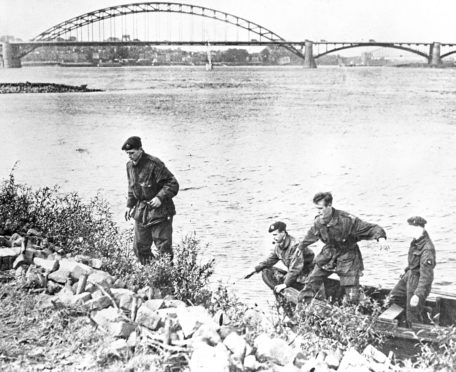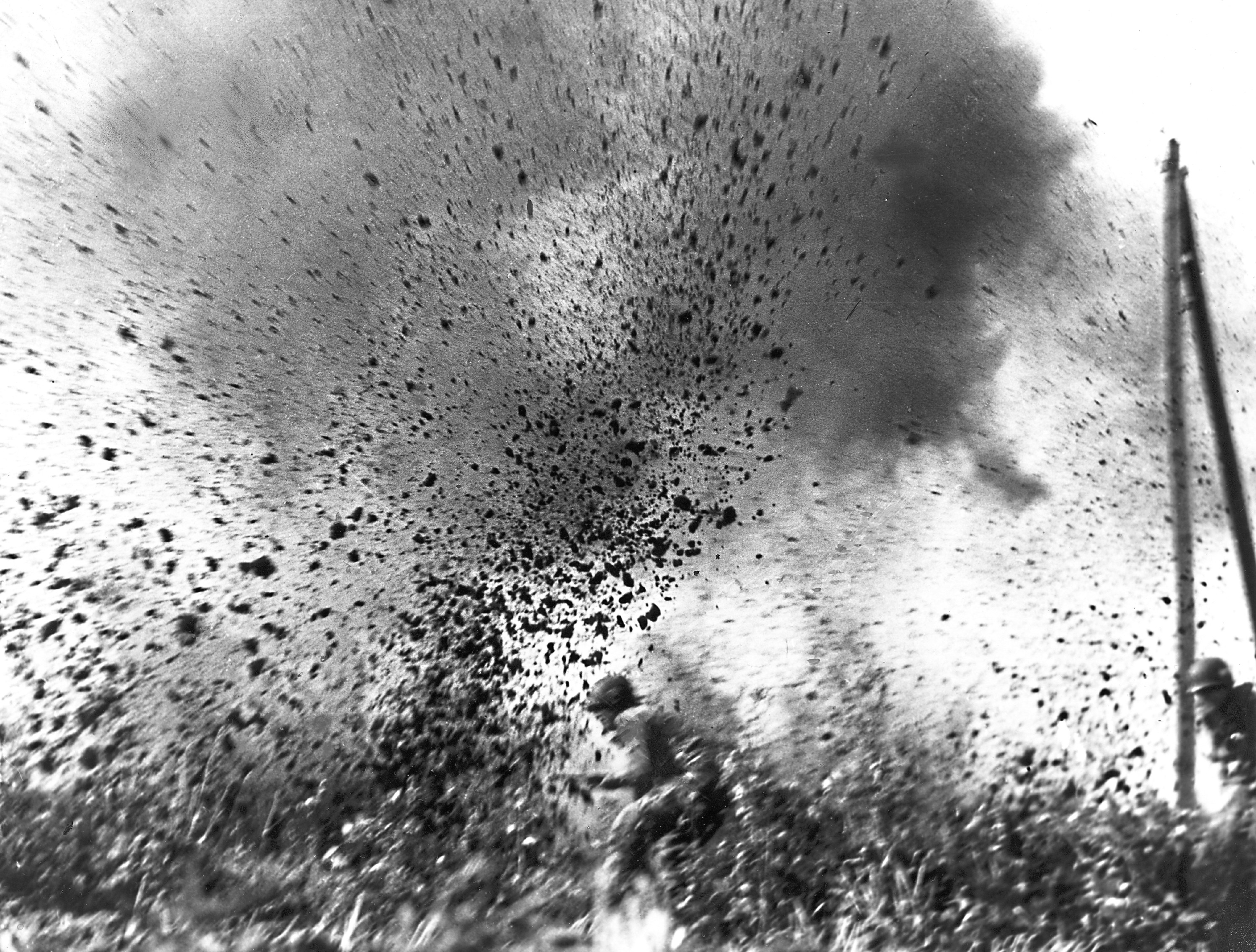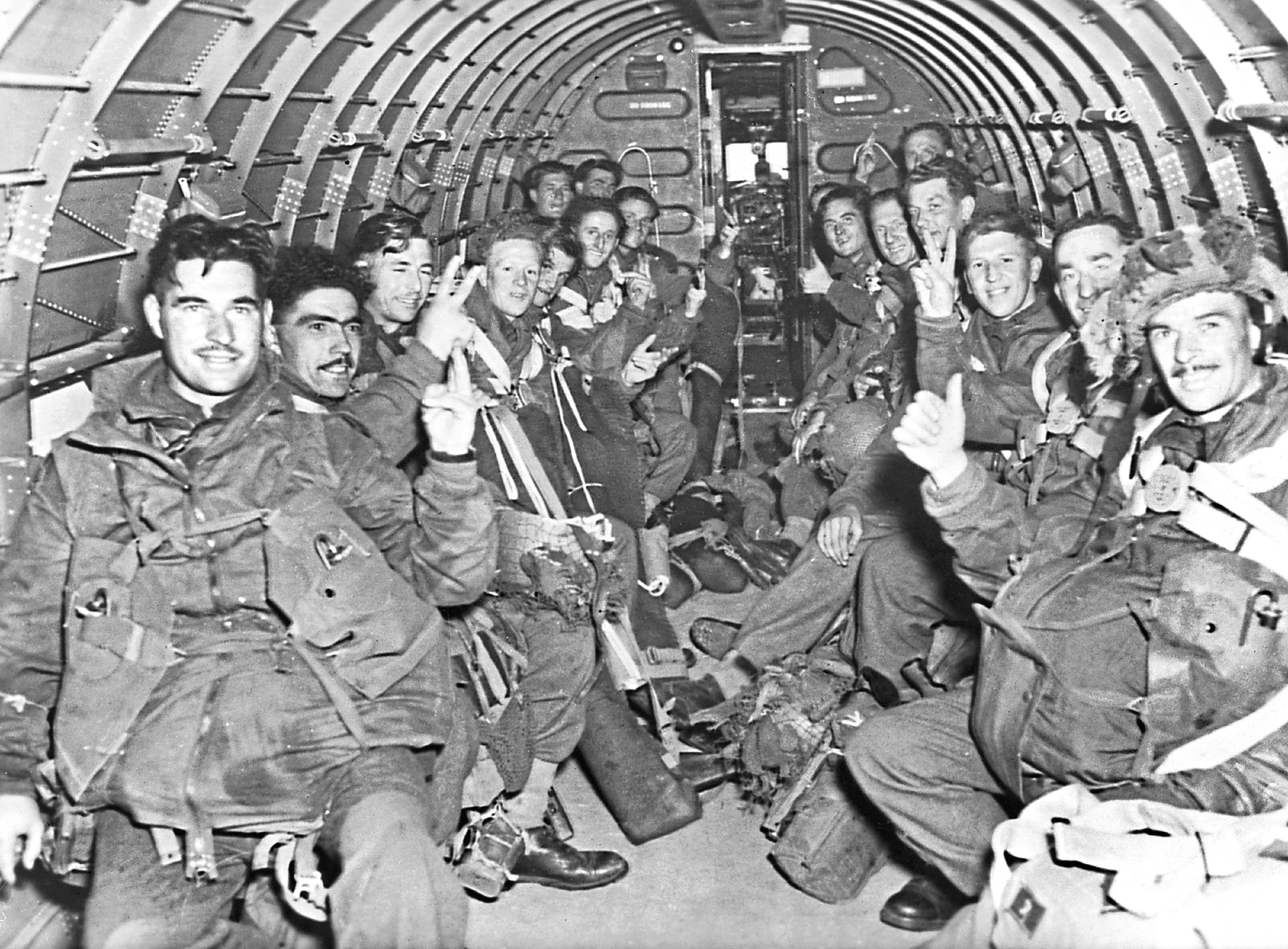
A Bridge Too Far. We all know the title of Richard Attenborough’s star-laden epic war movie about Operation Market Garden, which began 75 years ago today.
Launched on September 17 1944 it was the largest airborne assault in history, half as big again as that on D-Day, and one of the most controversial actions of the Second World War.
The quote is attributed to a senior Allied commander who feared Field Marshal Montgomery’s plan to seize a series of nine Dutch water crossings to hasten his advance into Germany was overambitious.
And he was unfortunately proved right as the bridge in question, the final one at Arnhem, wasn’t captured meaning the operation failed in its ultimate aim of establishing a foothold over the Rhine.
The battle for Arnhem exacted a grim toll, too, as the British 1st Airborne Division suffered 8,000 casualties and was finished as a fighting force.
No one can say for sure who coined the phrase “a bridge too far” but it would have been more accurate to say “too far from the bridge”.
While every previous major Allied operation had taken months if not years of meticulous planning, Market Garden was proposed in haste to try to take advantage of what appeared to be the German army retreating in disarray.
And the biggest blunder was landing 1st Airborne up to 13km away from the bridge, as paratroops work best when they land right on top of their target, taking the defenders by surprise.
This decision was based on a lack of transport aircraft, with American air commanders insisting they stay away from the flak guns surrounding the town to preserve their numbers.
And the scarcity of planes also meant only half of the division’s 10,000 men could be landed in the first wave, and of them only half could advance on the bridge as the rest had to defend the drop zone ahead of the anticipated reinforcements.
Furthermore, once they landed it was found the various units couldn’t talk to each other as their radios had been set to the wrong frequencies.
This saw its commander, Maj-Gen Urquhart, make the questionable decision to take a Jeep and find out what was happening only to be cut off by the Germans for two days, leaving his men lacking leadership.
Worse, enemy resistance was more determined than anticipated and only a small force of 740 men made the bridge itself, where they held out against overwhelming odds before being overrun.
To be fair, the weather played its part. Fog and other adverse conditions delayed reinforcements and supply drops, meaning the Poles couldn’t parachute into Arnhem until the fifth day.
It was a sorry conclusion to an operation whose ultimate aim was that classic wartime objective of making sure “it will all be over by Christmas”.
There was also a second, secret, objective of perhaps beating the advancing Red Army to Berlin and limiting Soviet expansion into Western Europe.
But when the Allies failed to capture that final bridge, neither was going to happen.
In the event, the Germans were able to regroup and the Rhine, a formidable natural barrier, wasn’t crossed until March 1945.
Market Garden was the northern “pincer” in the Allied supreme commander General “Ike” Eisenhower’s overall strategic plan to encircle the Ruhr, Germany’s industrial heart.
The plan was to punch more than 60 miles through the Netherlands and establish that vital foothold across the Rhine, and it had two parts.
Market was a series of airborne assaults to seize the bridges, laying a carpet of 35,000 paratroops and glider troops over which – in the Garden element – the tanks of XXX Corps would roll.
At first, the operation went to plan as the Allies captured several bridges between Eindhoven and Nijmegen.
XXX Corps were held up for 12 hours when the Germans blew up the bridge over the Wilhelmina Canal before the US 101st Airborne Division could capture it but British sappers (army engineers) quickly built a temporary Bailey bridge and the armoured column reached Nijmegen on schedule.
However, the US 82nd Airborne had failed to seize the bridge there meaning the tanks had to fight their way across, costing a catastrophic 36 hours.
And it was 1st Airborne Division who bore the brunt of the delay. They’d captured the western side of the bridge at Arnhem but by necessity paras lack heavy weapons and, finding themselves unexpectedly facing elements of two SS Panzer Divisions, they did well to hold out for nine days.
In a horrible coincidence, these crack Nazi units had been sent to rest and refit in what had been seen as “safe” areas.
If you’ve seen the movie, these were the tanks supposedly spotted by an RAF recce flight.
Popular myth has it that 1st Airborne’s intelligence officer was sufficiently alarmed by these, plus reports from Dutch resistance and decoded German radio messages, that he warned of the “grave danger” but was ignored and allegedly sent on sick leave.
In fact, no such flight took place but facing such odds it’s little wonder the paras lost nearly three-quarters of their fighting strength.
And it wasn’t only the combatants that suffered. A direct consequence of the operation was the Dutch Famine of 1944-45 as during the battle, Dutch railway workers, at the behest of the Dutch government in exile in London, went on strike in order to aid the Allied assault.
In retribution, Germany forbade food transportation and in the ensuing winter more than 20,000 Dutch civilians starved to death.
Some have argued that Market Garden was doomed before it started, not only because the plan was put together in haste but because of what’s been called “The Great Mistake”.
This was the fact the Allies captured the massive port of Antwerp intact, which should have secured a steady stream of vital supplies.
But the Scheldt estuary that covered the approaches remained in German hands, meaning no supplies could come in, and 80,000 Germans were able to escape over the estuary to join the fighting for the bridges in Eindhoven and Nijmegen, helping delay the tanks racing to relive the beleaguered paras.
Monty admitted his mistake – the only time a senior Allied commander acknowledged a failure – but still claimed the operation was “90% successful”.
That might have been an overestimation but Market Garden wasn’t a total failure.
Several Dutch towns and cities were liberated and the front line pushed back, which moved the launch sites of the Nazis’ V-2 rockets farther away from Britain, but the cost had been huge.

Enjoy the convenience of having The Sunday Post delivered as a digital ePaper straight to your smartphone, tablet or computer.
Subscribe for only £5.49 a month and enjoy all the benefits of the printed paper as a digital replica.
Subscribe © PhotoQuest/Getty Images
© PhotoQuest/Getty Images © Imperial War Museums via Getty Images
© Imperial War Museums via Getty Images